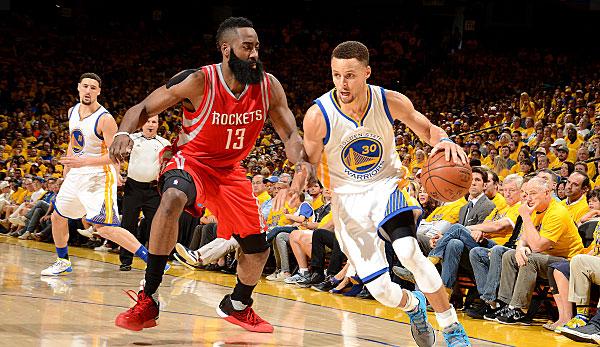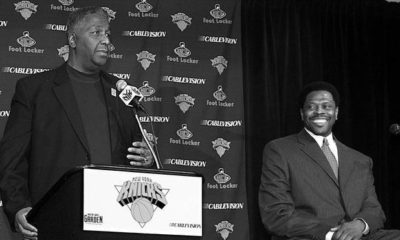US-Sport
NBA: Stats Theme Week: The offensive appeal of the Stephen C.
In the next part of the SPOX Analytics theme week, we will take a look at the individual offensive performance of NBA players.Who are the best shooters, scorers and game designers?Which statistics show us strengths and weaknesses and which stars help their teams to a particularly efficient offense?
As with all statistics, the following selection of course also applies to the fact that it can only depict a part of the truth.Stats make an important contribution to the analysis and evaluation of players and teams, unless they are accepted as an untouchable truth regardless of their context.It is always worthwhile to look at different numbers and perspectives and critically question data.The sample size here, for examplethe number of minutes played or throws taken is important for the significance.The larger the sample size for a player, the more reliable are his statistics.
Despite the so-called “triumphal march of analytics” and the allegedly associated seizure of power by nerds, statisticians and number jugglers, the most-used data in NBA reporting to date are the simplest of all statistics: points, rebounds, assists, steals, blocks and turnovers per game.At first glance it becomes clear why the evaluation of players on the basis of these key figures is problematic: Not every player spends the same amount of time on the floor.
20 points, 8 rebounds, 2 assists, 2 blocks, 1 steal – Rookie Joel Embiid played these impressive numbers last season for the Philadelphia 76ers.But they are even more impressive when you consider that the young Big Man was on the field for just 25 minutes per game.So how do you assess his performance during this limited time?
The simplest variant of scaling is the calculation of simple statistics per game time.The 36-minute unit should be approximately equal to the average playing time of an indispensable starter.If Joel Embiid, with a good 20 points per game, is still in 32nd place in the Scorer ranking during the regular season 2016/17, this adjustment catapults him to 4th place.Only Russell Westbrook, Isaiah Thomas and James Harden scored more points than the 23-year-old (28.7) per 36 minutes of playing time.
The Cameroonian garnished this yield with 1.2 steals (12th place among all Big Men with at least 600 minutes played), 3 assists (13th place), 11.1 rebounds and 3.5 blocks (1st place in the NBA).So the simple pro-game numbers don’t do justice to the productivity of Philadelphia’s hopefuls.
The calculation of the same statistics per 100 possessions is even more accurate.Not only does it look at a player’s minutes played, but also at the speed of his team while he was standing on the court.Players whose teams play faster, i. e. with a higher pace, have on average more possibilities to score points, assistants etc.to come.
Since the Sixers 2016/17 belonged to the league’s faster teams, this even more precise standardization puts Joel Embiids numbers into perspective.For every 100 balls he owns his team, he now occupies 5th place in the Association with 38.9 points “only”.The difference is even more pronounced in Harden, where the Houston Rockets’ quick game under Mike D’ Antoni offers a lot of scoring opportunities.The second-best scorer of the NBA per game after Westbrook, Harden falls back to 7th place with 38.4 points per 100 rockets attacks – behind Embiid, DeMar DeRozan and Kawhi Leonard.
Both scales have the same goal: to make the productivity of different NBA players comparable, even if they don’t have the same length or frequency of boxing scores in their teams.However, these opportunities are usually not evenly distributed to all the players of a team within the 36 minutes or 100 possessions of the ball.
With the Oklahoma City Thunder, for example, Andre Roberson – probably with good reason – gets the chance to end attacks with his own throw much less often than MVP Westbrook.Therefore, the offensive also raises the question of how efficiently a player uses the (throwing) chances he actually gets in his role.
Page 1: Standardization of points, rebounds, assists and the like.
Page 2: The litter: effective vs.”true” shooting
Page 3: Role and Playing: Sniper Nowitzki and historical Westbrook
Page 4: Efficiency and “Gravity”: What is “good” Offense?


















You must be logged in to post a comment Login